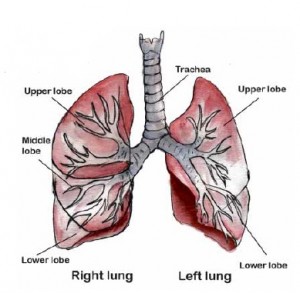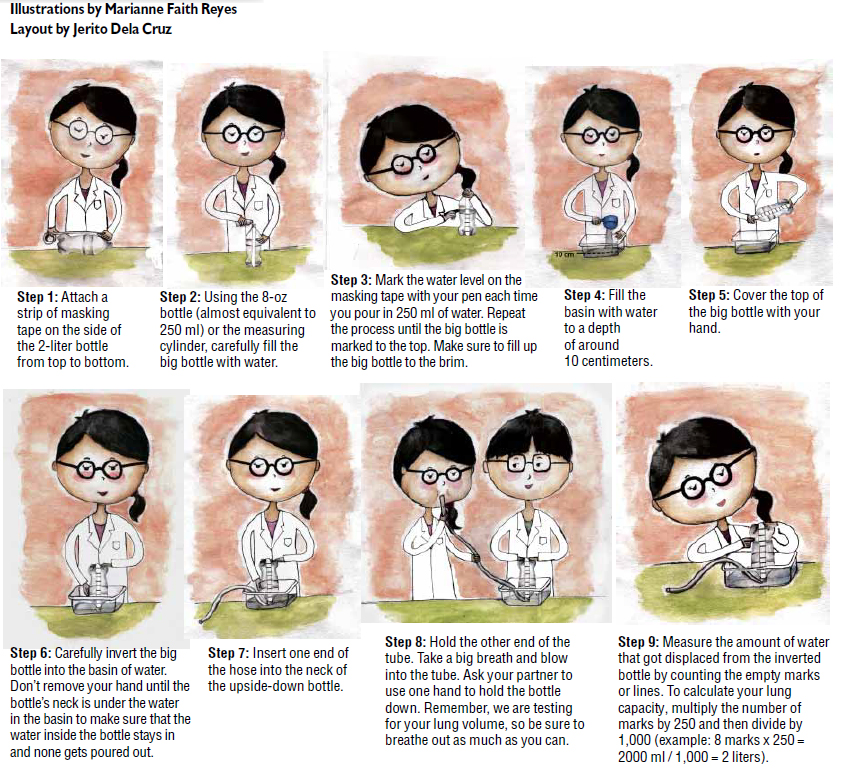Take a deep breath

Every time you breathe in through your nose or mouth, air travels to your lungs through your trachea. This is part of the process called respiration.
The lungs are the most important organs of your respiratory system. They transport oxygen into your bloodstream when you inhale and expel carbon dioxide out of your body when you exhale.
Your left and right lungs are not exactly the same. The lung on the left side of your body is divided into two lobes while the lung on your right side is divided into three. Your left lung is smaller than your right lung to give space for the heart. This is why your heart is slightly tipped to the left.
THE EXPERIMENT
Your lungs expand in size when you inhale. How much air do you think you can fit into your lungs in one breath? Find a partner and let’s test your lung capacity through this experiment using household items.
Article continues after this advertisementWhat you will need
Article continues after this advertisementMeasuring your lung capacity
THE SCIENCE
Here’s what happened: The air you just breathed out (exhaled) pushed the water out of the bottle. It took the place of the water in the bottle. The amount of water you managed to push out is proportional to your lung capacity. Having a bigger lung capacity means you can send oxygen around your body faster.
Takeaway learning
You can increase your lung capacity with regular exercise, like walking or by playing your favorite sports. It is also important that you help make the air you breathe clean in whatever way you can.
Start by planting trees. As you know, plants and trees produce the food we eat. But they do more. They absorb odors and bad gases from the atmosphere, filtering dirt from the air by trapping them in their barks and leaves. They then release the oxygen back to the air we breathe into our lungs.
Using the newspaper
Look in the Inquirer for a news story, a column, an ad and other information about pollution in our environment. It can be about what is causing the pollution or it can be about what people are doing to help fight pollution (planting trees, cleaning up the river, etc.).
Clip these items and glue each one on a sheet of paper. Make an album and give it a title (example: “Kids vs Pollution” or “I Earth”).
Next Tuesday: Balloon Experiment
About the series
The joy of discovery. The fun of learning.
These are the experiences that Bayer wants to pass on to young people in keeping with its mission, “Bayer: Science for a Better Life,” and its enthusiasm for research.
By putting together simple, educational and fun experiments, elementary school students are encouraged to learn Science by doing Science.
The Bayer Smiling Kiddie Einsteins series offers teachers, parents and students hands-on and inquiry-based experiences that involve observing, experimenting, hypothesizing, analyzing and testing.
Through this series of experiments related to health, agriculture-
nutrition and hi-tech materials, Bayer and Inquirer in Education aim to deepen the interest of elementary pupils in Science.
The materials needed for these experiments are safe and can easily be accessed from your homes.

